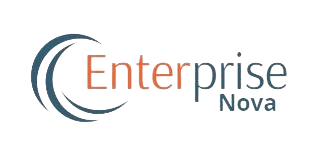If it has not already arrived in full force, the presence of AI in classrooms is certainly creeping steadily into education systems worldwide. It is already reshaping education as seen in the adaptive tutoring systems in Melbourne’s St Mary MacKillop College, which improved student engagement by nearly 50%, to U.S. schools experimenting with AI chatbots for personalized support.
What was once considered experimental is now becoming embedded in daily learning and it is clear that AI, with all its components, is here to stay. But its arrival comes with mixed signals and pressing ethical questions. What are the boundaries of student use? Can AI support learning without undermining academic integrity? And under what ethical or policy constraints should it operate? This article explores the vast opportunities, pressing risks, and thoughtful frameworks guiding the integration of AI in classrooms worldwide.
What is Already Happening (and What is Coming) Real-world implementations:
- St Mary MacKillop College (Australia) uses Education Perfect and Perplexity for instant, constructive student feedback, raising response quality by 47% and creating deep revision mindsets among students.
- Across the U.S., AI tools like MagicSchool AI are increasingly used for tutoring and administrative tasks, although access still unevenly favors well-resourced schools.
- New initiatives include a $23M teacher training hub sponsored by Microsoft, OpenAI, and Anthropic, empowering educators to integrate AI thoughtfully and ethically.
- Policy moves such as federal guidance in the U.S. now encourage AI-based tutoring, personalized content, and advising with an emphasis on ethical implementation and human oversight.
- Thought leadership suggests AI should augment, not replace: Khan Academy’s CEO likens AI to having five graduate assistants per classroom, lifting burdens from teachers but preserving their essential human role.
Opportunities: What AI Can Offer Students
Personalized learning
Adaptive platforms can tailor content and pace to individual strengths and needs. An example is AI tutors like Rori in Ghana which improves learning where human resources are limited.
Greater engagement and motivation
AI-driven interactive experiences (simulations, quizzes, real-time feedback) can boost immersion and enthusiasm for learning.
Accessibility and equity tools
Features like text-to-speech, voice input, translation tools, and accessible materials support diverse learners and students with disabilities.
Administrative relief for educators
Automating grading, attendance, and planning saves time, allowing teachers to focus on relationships, mentorship, and creative lesson design.
Risks: Where AI Could Undermine Education
Academic integrity and over-reliance
Students may submit AI-generated content without comprehension, bypassing the learning process, undermining critical thinking and originality.
Bias and inequity
AI trained on skewed data can reproduce stereotypes or disadvantage non-native speakers and marginalized groups. For instance, AI detectors have wrongly flagged work by non-native writers.
Privacy and data security concerns
The massive collection of student data raises risks, unauthorized access, misuse, and breaches of sensitive personal information.
Eroding human connection
Over-dependence on AI can weaken human relationships in teaching, reduce emotional support, and diminish social skill development.
Environmental and ethical considerations
Large AI models consume significant energy and may rely on copyrighted or exploited labor, presenting ethical and environmental dilemmas.
Setting Conditions for Responsible Use
Schools and educators are crafting conditions to harness AI while safeguarding learning integrity:
Cultivating ethical AI culture
Students should acknowledge their use of AI, and educators can model that openness. Educators can use tools like Leon Furze’s AI Assessment Scale to clarify acceptable assistance per assignment.
Policy guidelines and oversight
Federal guidance now permits AI in classroom tools but with stipulations for ethical and human-supervised use. Teacher unions and institutions are pushing for educator-led implementation with privacy, fairness, and transparency at the core.
Educator preparedness and professional development
Teacher training initiatives like the AFT hub empower educators to lead AI integration rather than be passive executors. Thought leaders emphasize building critical thinking and creativity from early education, with or without AI.
Ethical frameworks and inclusive design
Institutions are urged to adopt guidelines like UNESCO’s AI in Education or IEEE’s ethical design principles to ensure fairness, privacy, and inclusivity.
Bridging the digital divide
Equity in access means investing in infrastructure, affordable tools, and digital literacy programs, especially for underserved communities.
Encouraging active oversight
Scholarly models like “AI-tutor,” “AI-coach,” or “AI-team-mate” keep humans in the loop, students critically assess AI output rather than passively accept it.
Student Voices and Real-World Impact
A recent survey among undergraduates in the U.S. highlighted their mixed feelings about benefits and risks of AI chatbots in education: they appreciated AI for feedback and access to information but voiced concerns about academic honesty, over-reliance, and errors. Crucially, they called for clearer policies and AI literacy embedded in the curriculum.
In Summary
AI is already gaining traction in classrooms globally, as a personalized tutor, administrative ally, and tool for inclusion. But its power must be balanced with purposeful boundaries: transparency, equity, human guidance, data protection, and ethical oversight. When used with intent and care, AI can deepen learning, amplify teaching, and empower students for a future where collaboration between humans and machines is the norm.

